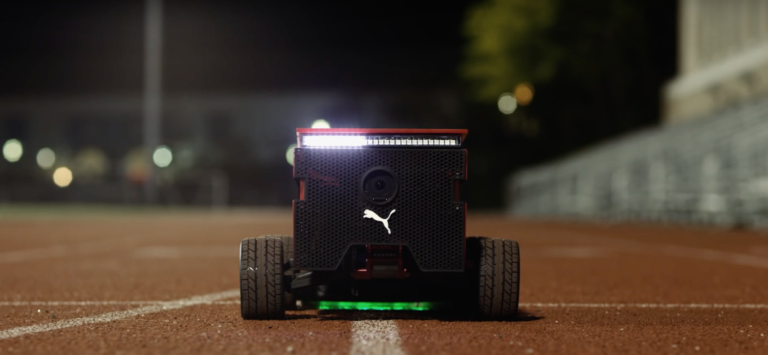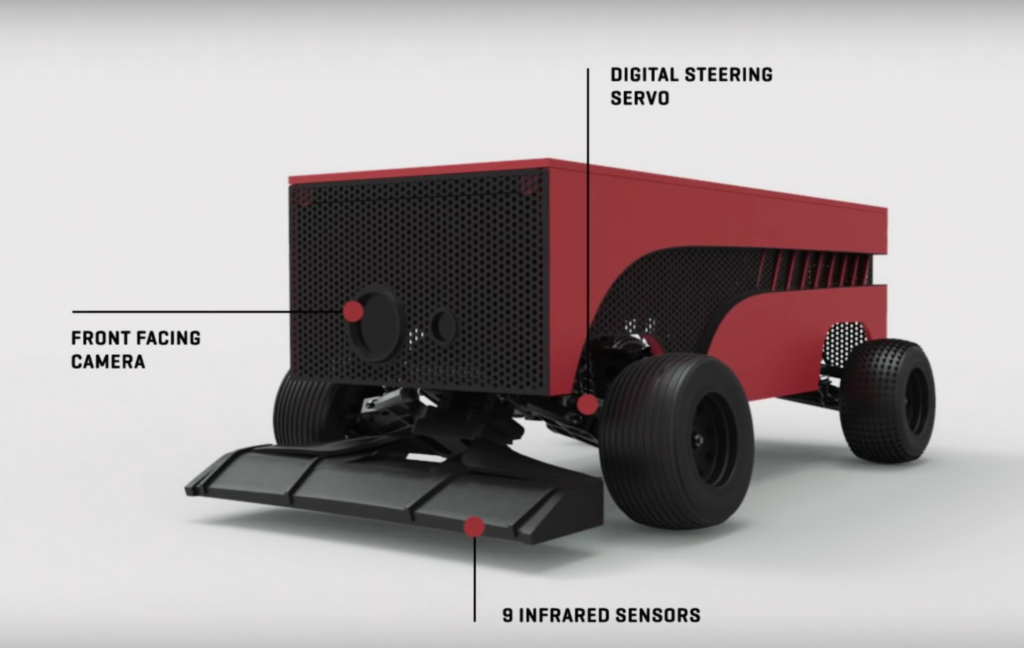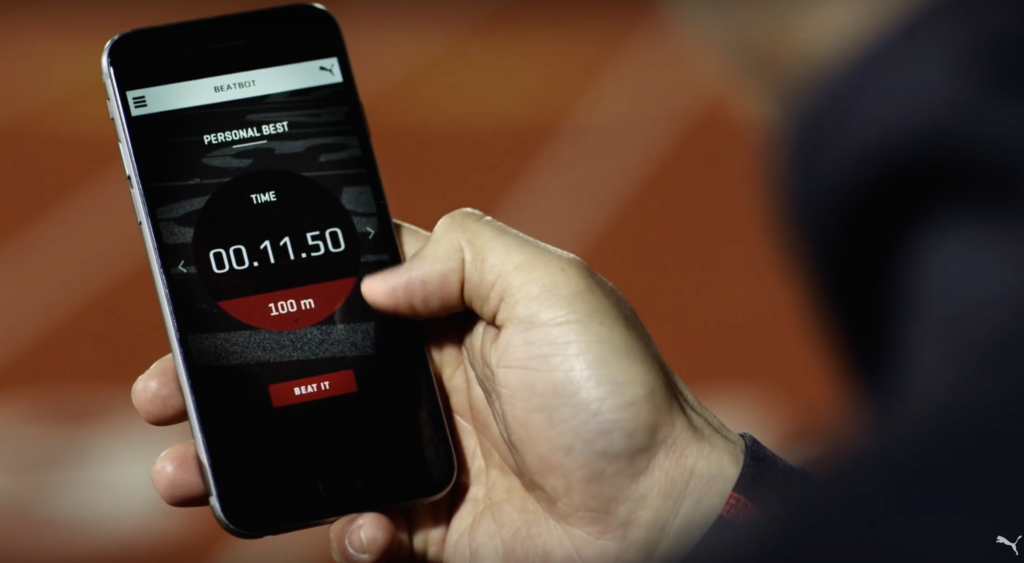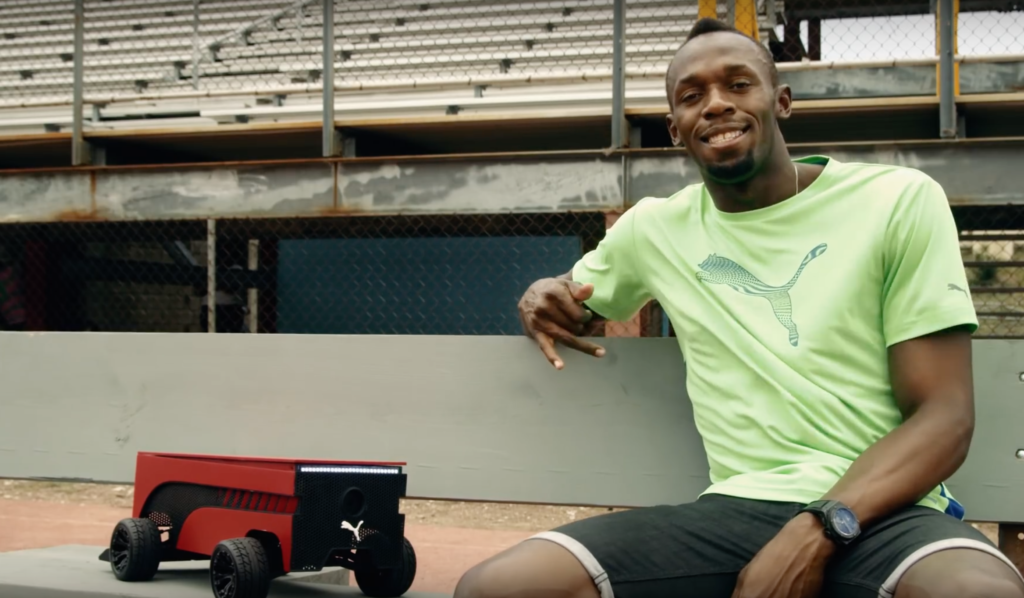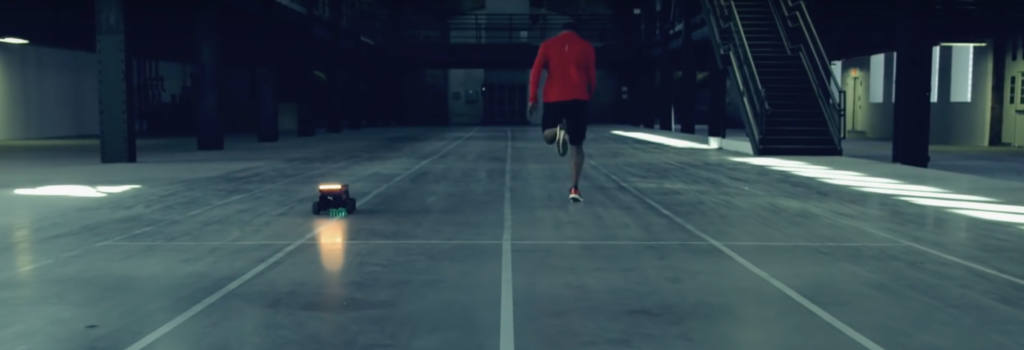Imagine that with your next pair of Puma Ignite’s that the box itself turns into Usain Bolt and can help you train harder. While that may sound incomprehensible now it isn’t that far off. Enter Puma’s raceable tech the Beatbot.
It works like this: Using 9 infrared sensors it counts the revolution of the wheels to calculate speed and distance. Then, using the data entered by the user makes up to 100 adjustments a second to match the pace you are trying to beat.
Ultimately by entering the distance you want to race and the time you want to beat – enter your own best time, a rival’s best time or a professionals best time- and then placing the robot on the track you are giving yourself the ability to race everyone from Jenny from the block to Usain Bolt.
It was designed to push runners of all levels harder and to give them a real target to keep up with (not just a number).
Now, many purists or naysayers may argue they don’t need a robot to train harder or just need the numbers to beat but there is scientific proof to prove otherwise.
As Gina Kolata reported in The New York Times in 2011 there was a study by a Dr Kevin Thompson to investigate whether it was possible to reduce the times of participants in a 4,000-meter cycling time trial (about 2.5 miles) using a stationary bike by deceiving the racers into believing they were competing against their personal best.
“Each rider was shown two avatars. One represented the rider himself, moving along a virtual course at the rate he was actually pedaling…The other figure was moving at the pace of the cyclist’s own previous best effort—or so the cyclists were told.”
But the researchers stretched the truth. They had programmed the second computerized figure to ride faster than the cyclist ever had—using 2 percent more power – translating into about a 1 percent increase in speed.
So while the cyclists believed they were keeping pace with their previous best, they ended up shattering that personal record and increasing their speed by 1 percent— large enough to make the difference between winning and losing.
Throwing somewhat of a monkey wrench in the first studies conclusion Thompson and his team of researchers conducted a second study to test just how fast an athlete could go, even when deceived or amid competition. The results? Mixed. According to Kolata: “they showed that the alleged presence of a competitor could disempower athletes as well as enhance their performance. One group was told that their ‘opponent’—again, a phantom—would be racing at a pace 2 percent or 5 percent faster than each cyclist’s best time. Their spirits seemed to flag from the start, and they managed only to equal their own best efforts. The second group was deceived. They were told they’d be riding against avatars at the pace of their own best effort, when in fact the avatar was moving 2 percent to 5 percent faster. That group kept up with the avatars moving 2 percent faster, but couldn’t catch the 5 percent-ers.
Thompson says that his results prove that ‘a small deception of the brain can enhance performance…Within limits [the cyclists couldn’t go 5 percent faster], if an athlete thinks a certain pace is possible, he or she can draw on an energy reserve that the brain usually holds in abeyance’.”
Hmmmm. So maybe you’ll need a Beatbot and someone to trick you a little? Read on.
Then there was a study by Jo Corbett, a senior lecturer in applied exercise physiology at the University of Portsmouth in England, which confirmed the results of Dr Thompson’s results from the first study.
In Corbett’s study two avatars were projected on the screen, the first one representing the rider and the second a “competitor” who, they said, would be in the room with them, only hidden behind a screen.
That competitor, however, was an avatar representing the cyclist moving at the pace of his personal best over 2,000 meters. The cyclists easily beat their best times thus proving that whether a competitor was real or not didn’t matter—as long as the cyclists believed that it was.
With that said it appears that something like the Beatbot can truly be of significant value and give us a peak into the evolution of the footwear and lifestyle industry as it unfolds. Imagine buying a pair of sneakers and being able to watch a never before seen holographic performance of your favorite performer in your living room while simultaneously being taught dance steps, notes, or whatever.
Now imagine buying a pair of Jordan’s and the box turns into Michael Jordan himself allowing you to train with quite possibly the greatest basketball player of all time whenever you want.
Image via Gilbasketball
This could be the future.
So, whether the Beatbot is a giant leap for both training and the footwear industry has yet to be seen -and for now its only available for Puma sponsored athletes- but it offers a delightful glimpse into the possibilities the future holds.


